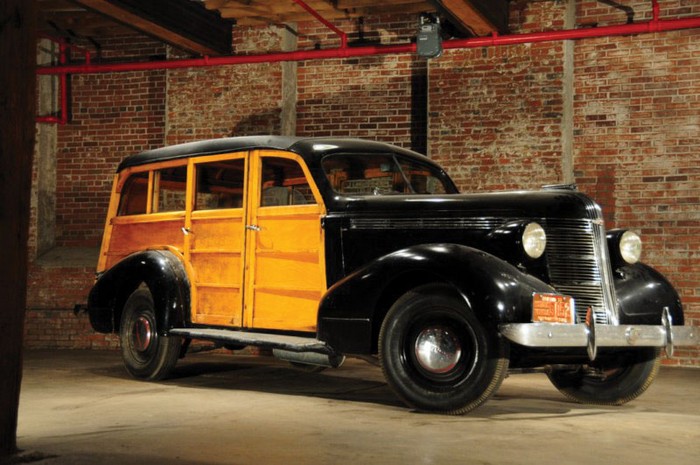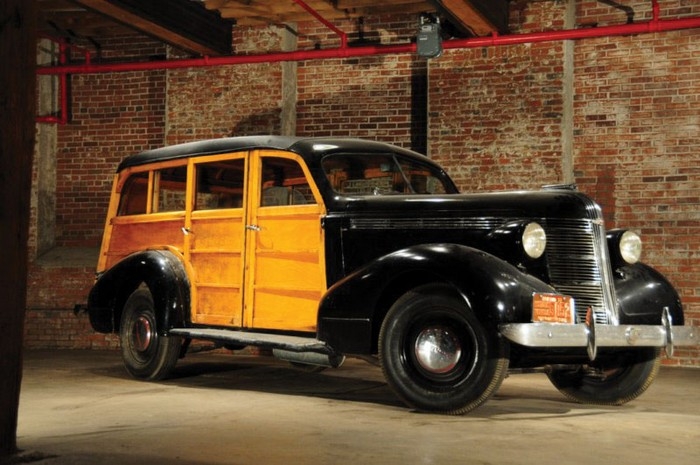
• Reported to have sold new to the Wrigleychewing-gum family in Chicago, 1937
• Sold by Wrigley family in 1977 to family mechanic, then to a collection in Arizona in 1983; stayed there until 2013 in dry storage
• It is said that this rare and interesting woodie is one of four known to exist
• Pontiac is presented as a nearly all-original car with 41,035 miles and fantastic patina
• One repaint in black, newer top, some wood in the rear has been replaced, seat covers redone in the 1980s
• Six-cylinder engine with manual transmission

